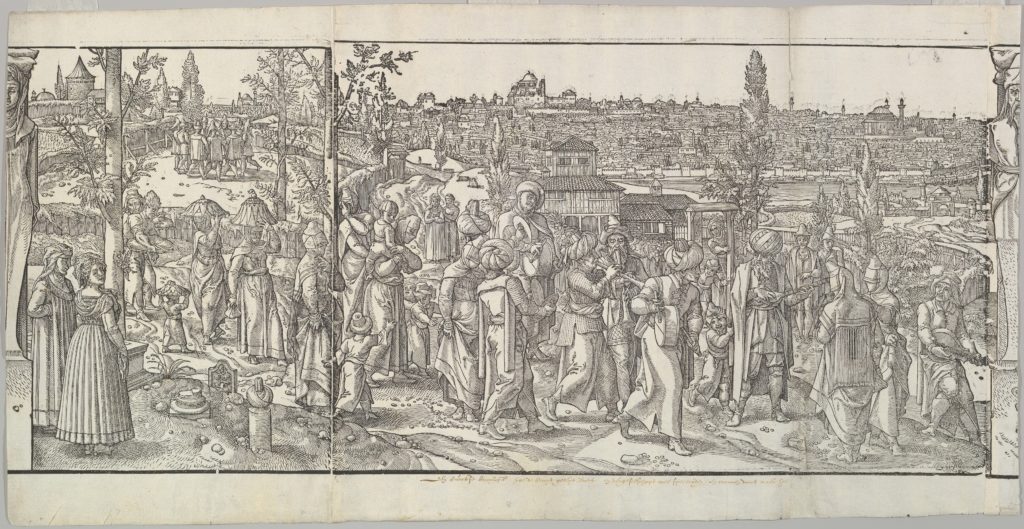
Date: c. 1533 (original), 1553 (published)
Artist: Pieter Coecke van Aelst
Source: Ces Moeurs et fachons de faire de Turcz (Customs and Fashions of the Turks)
Credit: The Metropolitan Museum of Art
Link: https://www.metmuseum.org/art/collection/search/422769
The Dutch artist Pieter Coecke van Aelst traveled to Istanbul in 1533 to convince the sultan to commission tapestries from him. He failed, but brought home masses of drawings, which his wife published in 1553, after his death, as a volume titled Ces Moeurs et fachons de faire de Turcz (Customs and Fashions of the Turks).
Unfortunately, we have none of Coecke’s original sketches, only the woodcuts based on his work. This makes it difficult to know how far to trust the details. For example, near the center of the woodcut above, a bearded horn-player wears a hat worthy of Gandalf. Is it a real hat that doesn’t appear in other art? The engraver’s misunderstanding of Coecke’s sketch? Coecke’s own misunderstanding? Pure fantasy? A cymbal-player with his back to the viewer has a strange band across his shoulders, and the hanging sleeves of his coat emerge from his armpits. An obvious mistake, but Coecke’s, or the engraver’s?
And yet, some of the details ring true. For example, the details of the women’s yaşmaks (veils) match what we see in art that’s known to be accurate. It also adds detail, like the fringe on the lower edge of the veil that covers the women’s lower face and upper chest, that could be either fantasy or real–given the fondness of Ottoman Turks for fringe and the appearance of fringe on other garments, I’m inclined to say it’s accurate.
So I offer Coecke’s work along with a small dish of salt. If you want to see the entirety of Ces Moeurs et fachons de faire de Turcz, it’s online at the Met.
